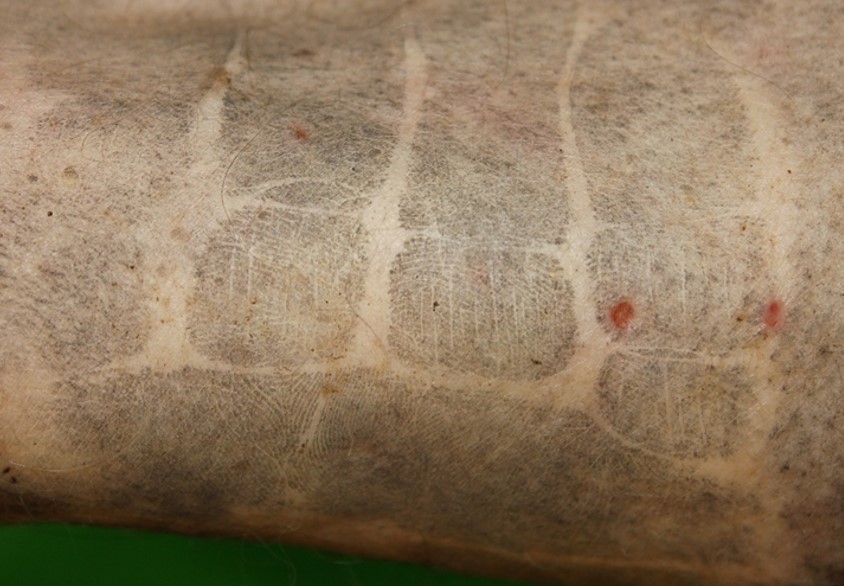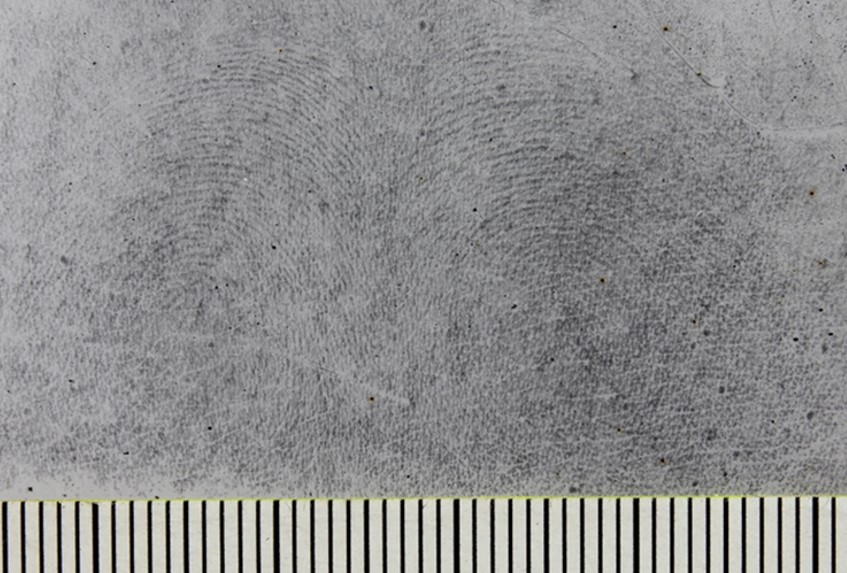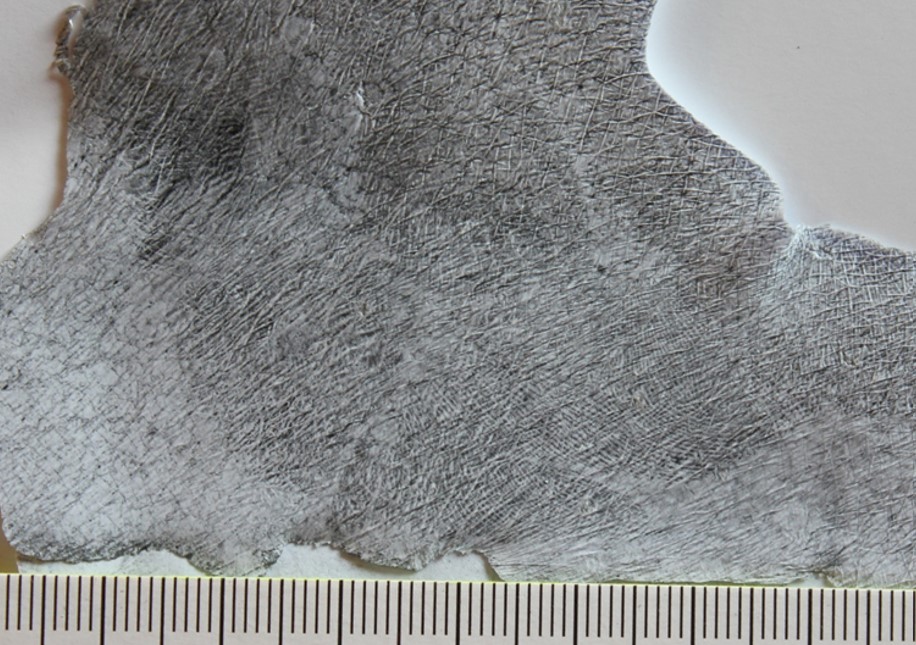First theoretical and practical study in Latvia on fingerprints on the skin of deceased persons
Evidence is needed to solve a crime and to bring the perpetrator to justice. One of the most common pieces of evidence at a crime scene are fingerprints, or traces of papillary patterns, which can be found, for example, on a weapon, a banknote, a cartridge, a cloth, etc.
One of the most difficult surfaces on which latent, or invisible papillary traces can be left is human skin, as skin leaves traces on skin.
This situation can arise during a crime or afterwards, for example when moving a dead body in an attempt to conceal it.
In her doctoral thesis research, RSU doctoral candidate and acting lecturer at the Faculty of Social Sciences, Dr. Aelita Zīle conducted an experiment at the National Centre for Forensic Medicine, in which 1,419 latent papillary traces were left on various parts of the body of 41 test objects. The experiment aimed to investigate the appearance of the traces on the skin, as the papillary pattern is not always visible.
 A trace of a papillary line pattern on the forearm of the right hand, made visible by using Swedish Black fine consistency fingerprint powder. Image from Aelita Zīle’s doctoral thesis
A trace of a papillary line pattern on the forearm of the right hand, made visible by using Swedish Black fine consistency fingerprint powder. Image from Aelita Zīle’s doctoral thesis
The best dactyloscopic powders for staining latent traces were investigated and analysed. By recopying the traces on different dactyloscopic films and silicone pastes, it was investigated how the traces are visible after recopying.
 Traces of papillary line patterns visualised on the chest with Special Blower Black dactyloscopic powder and copied onto Gelantin Lifters White dactyloscopic film. Image from Aelita Zīle’s doctoral thesis
Traces of papillary line patterns visualised on the chest with Special Blower Black dactyloscopic powder and copied onto Gelantin Lifters White dactyloscopic film. Image from Aelita Zīle’s doctoral thesis
The study investigated the conditions that can affect the preservation of latent papillary line patterns, which dactyloscopic powders best stain the invisible trace, and which dactyloscopic films and silicone pastes best replicate the stained trace.
 Traces of papillary line patterns visualised on the right ankle with Black Special dactyloscopic powder and copied on White silicone with paste hardener. Image from Aelita Zīle’s doctoral thesis
Traces of papillary line patterns visualised on the right ankle with Black Special dactyloscopic powder and copied on White silicone with paste hardener. Image from Aelita Zīle’s doctoral thesis
This is the first theoretical and practical study in Latvia to perform an experiment in visualising latent papillary line patterns on the skin of a deceased human.
Related news
 RSU Rector Prof. Aigars Pētersons highlights new cooperation opportunities offered by establishing Artificial Intelligence CentreFor Students, For RSU Employees, Development
RSU Rector Prof. Aigars Pētersons highlights new cooperation opportunities offered by establishing Artificial Intelligence CentreFor Students, For RSU Employees, Development


